A decline in search traffic often prompts the internal ask for an increase in content production.
The problem with that?
Creating more content to try and make up for declining traffic and leads usually isn’t the best way to fix stagnating or declining growth.
An alternative strategy, often overlooked by SaaS content marketers, is conducting a content refresh.
A content refresh involves revisiting and modifying existing content on a company’s website to boost organic traffic in the short term and kick lead generation back into high gear.
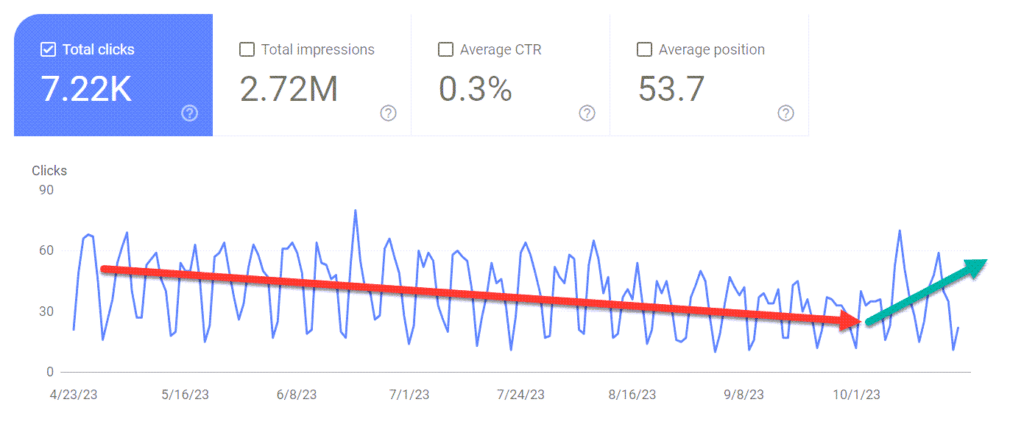
In this article, we’ll dive into the benefits and practicalities of content refreshing as a strategy for SaaS businesses.
A content refresh is the process of updating and improving existing website content to keep it relevant, fresh, and valuable to the target audience.
The process of conducting a content refresh oftentimes involves revising outdated information, enhancing readability, optimizing for search engines, and adding new elements to boost user engagement.
Updating content is essential since it helps to maintain and improve search engine rankings, which can lead to more quality organic traffic, and improve lead flow.
Additionally, and important to SEO as a whole, a content refresh can enhance user experience and ensure that readers find reliable and up-to-date information during their search.
There are several techniques for carrying out a content refresh, including:
The process of conducting a content refresh is generally ongoing, depending on the freshness required of the information you’re covering, and can in many cases happen on a quarterly basis, if not even more frequently.
Conducting a content refresh will help to drive a surge in organic traffic leveraging the existing content assets you already have in place.
But that’s not all.
There are other benefits that come into play as well:
While most companies focus on acquiring new backlinks, retaining the existing ones is equally crucial.
Building new backlinks consistently over time can be a challenging task, and therefore, we want to ensure we keep as many of our existing links as possible.
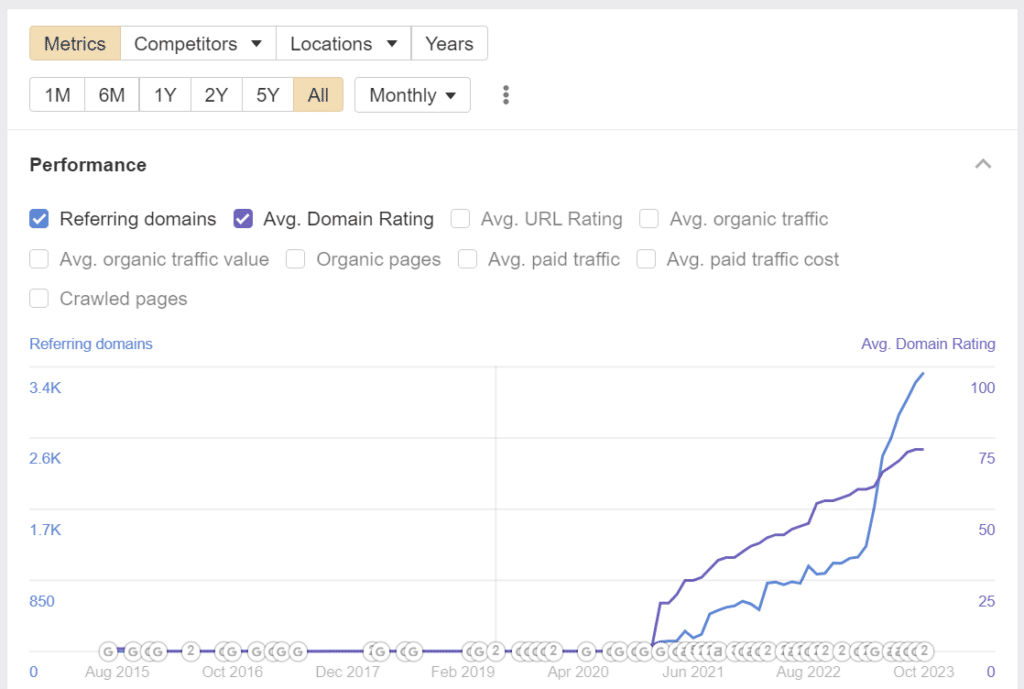
How can this be done?
Keeping content updated, timely, and relevant makes it challenging for competitors to take away your backlinks since you continue to own top positions in the SERPs.
Older content and pages may experience a decrease in traffic due to outdated headlines and descriptions.
The meta description and meta title of your pages are always extremely important since those are the core factors that are shown in the SERPs.
By modifying them to reflect current dates, CTR (clickthrough rate) can be increased.
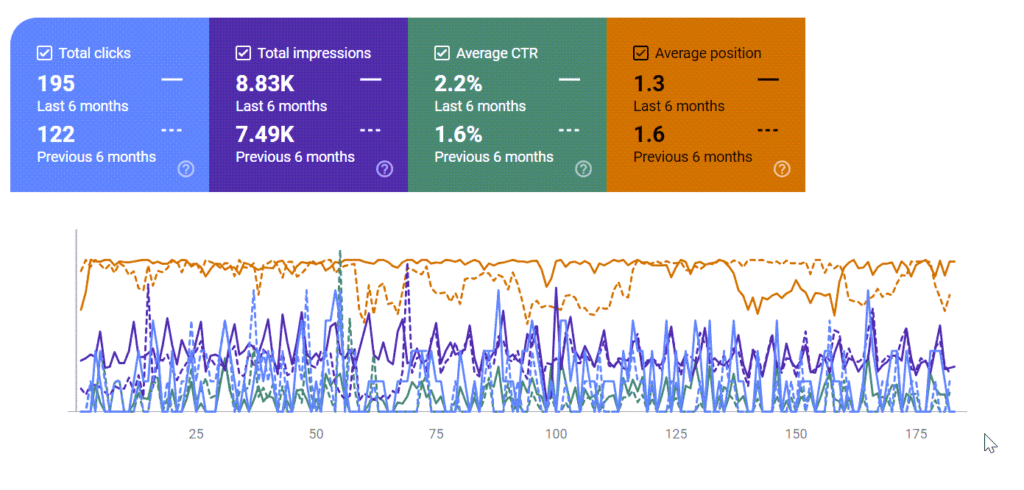
By improving CTR across our core pages, we’re driving more clicks, and more traffic to our pages – resulting in more right-fit website visitors.
Google seeks to provide content that is relevant, authoritative, expert-driven, and trustworthy.
Freshness is also a key factor in its algorithm, as evidenced by its QDF (Query Deserves Freshness) component.
Query Deserves Freshness (QDF), is a Google re-ranking function.
Translated to plain English?
QDF means searches that deserve up-to-date search results.
By using QDF, Google is trying to identify the topics and search requests where the user has a desire for new and current content, to position up-to-date information at the top of these results.
Updating older content can fulfill this requirement, resulting in a boost in search engine rankings.
Owning multiple pages ranking for the same keyword may seem advantageous, but it leads to self-competition, a phenomenon known as keyword cannibalization.
Refreshing content can resolve this issue, resulting in increased cumulative traffic by preventing keyword cannibalization.
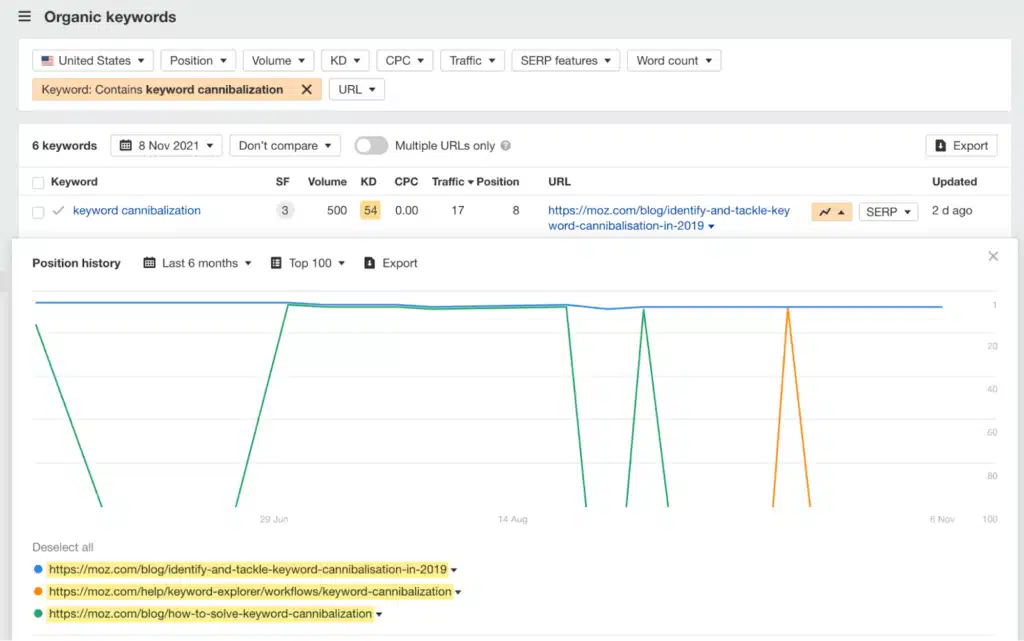
Keyword cannibalization will most certainly hurt your SERP rankings, and cause traffic drops over the long-term.
By incorporating content refreshes as part of your SEO strategy, you not only maintain website authority but also improve click-through rates, create comprehensive content effortlessly, cater to Google’s ranking preferences, and combat keyword cannibalization, ultimately achieving an effective and winning SEO approach.
Locate and note the publication dates on your website’s CMS.
For every single page, we’ll want to know the exact date on which it was either published or last modified.
To stay organized, make a CSV file or Excel spreadsheet containing all the pages that are over 6 months old.
This phase helps identify pages that are losing their impact on ranking and conversions.
Go to Google Search Console and observe how traffic and conversions have evolved for each of the oldest pages.
Pages with an upward or steady trend can be left untouched.
However, pages experiencing a decline are likely decaying and would benefit from a refresh
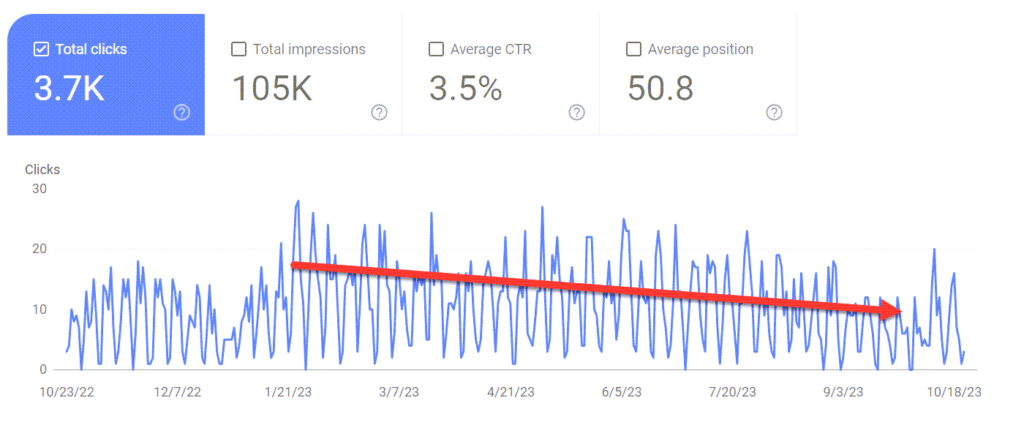
Don’t restrict yourself to evaluating pages that only did well in organic search.
Consider rejuvenating content that generated significant social sharing too.
Repurposing old but timeless topics that were successful on social media can succeed again.
Recycling an old piece of content can potentially attract new individuals who missed it the first time.
Before beginning to refresh these pages, we’ll want to bucket them into categories.
Organize your content into two distinct groups:
With these categories in place, we can start moving through the actual refresh process.
For content that is still relevant, start by making minor changes to update the meta title and meta description, as well as minor content updates to the page.
For completely outdated content, consider taking the approach of a complete rewrite of the page’s content, as well as a re-design of the page.
Since you’re going to be making updates to the actual content of your pages, it’s important that you include a signal to Google, as well as users, that the content has been refreshed.
If you’re not already displaying a “Last Updated” date on your articles, we’d highly recommend adding that to your content.

Anytime that an article is updated, rather than showing a publication date above the fold, you should be showing the date on which the last update was made.
This will provide a strong signal that the content has been updated, is fresh, and is up-to-date.
A simple way to boost traffic for existing content is by updating the title tags and meta descriptions of your older pages.
By doing this, you can increase click-through rates and potentially improve your rankings in Google SERPs.
To test new titles and descriptions, compare your current copy with the new one you create.
Some ideas for updating could include:
Updating the page title and meta description of the page is always the core starting point for conducting a refresh.
For content that is still relevant but has outdated elements like broken links and old screenshots, a light update can make a significant difference.
Add new links and update visuals to enhance the relevance and usefulness of the content.
Another great way to improve the page’s content is to do the following:
Adding additional content depth to pages, where possible, is another great way to refresh your content and to get it to rank at the top of the SERPs.
Sometimes, old content may rank better for different keywords than originally intended.
In these cases, optimize your page for these new keywords by adding a brief paragraph addressing related topics.
For existing content, your best source of finding additional keywords is generally going to be Google Search Console.
Targeting additional keywords within your content will add additional traffic naturally since you’re targetting variations and keywords that are relevant to your primary target keyword.
Merging related content can create more comprehensive and authoritative pages, attracting more backlinks and protecting against competitors.
Be prepared for an initial dip in organic search traffic, but once your content is re-indexed, traffic should rebound.
The most advanced content refresh strategy is a complete redesign, transforming old blog posts into dedicated, static landing pages.
This investment can pay off in the long run by repurposing high-traffic content for more conversion-focused objectives.
A well-designed and regularly updated landing page can stand the test of time and prove valuable to your audience.

To have a winning SEO strategy in place, it’s essential for SaaS companies to conduct regular content refreshes.
Conducting regular content refreshes will ensure that you keep your content relevant, fresh, and ranking high in Google’s search results.
As with anything that delivers impact, conducting a content refresh requires time and some manual legwork to get going.
But if you’re not conducting regular content refreshes, you’re likely giving up traffic, rankings, conversions and backlinks to your competitors.
Founder of Rock The Rankings, an SEO partner that helps B2B SaaS brands crush their organic growth goals. An avid fan of tennis, and growing micro-SaaS businesses on the weekend. 2x SaaS Co-Founder – Currently working to build and scale Simple Testimonial.
Book a 1-on-1 intro call with our founder that includes a FREE custom marketing plan. Start growing faster, today.